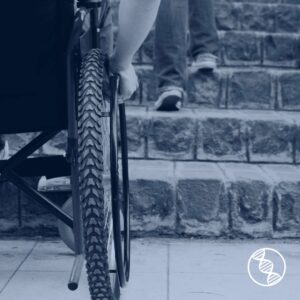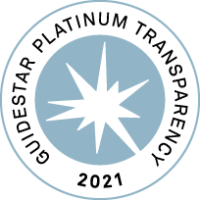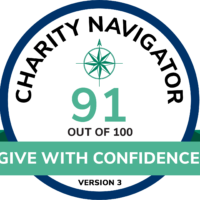 “Staff were huffing and puffing whilst I held up their all-important drinks cart and told me that ‘in 27 years of working on airlines, they’ve never seen the issue of disabled people having to wear nappies before,’” Jennie says, describing the hellish ordeal she experienced while on an AlbaStar Airlines flight. “I asked to go to the toilet and they just said ‘no we don’t have an aisle chair onboard’, with no suggestions of what I was to do,” says the early thirties community engagement professional and blogger, who chronicles her experiences as a disabled person.
“Staff were huffing and puffing whilst I held up their all-important drinks cart and told me that ‘in 27 years of working on airlines, they’ve never seen the issue of disabled people having to wear nappies before,’” Jennie says, describing the hellish ordeal she experienced while on an AlbaStar Airlines flight. “I asked to go to the toilet and they just said ‘no we don’t have an aisle chair onboard’, with no suggestions of what I was to do,” says the early thirties community engagement professional and blogger, who chronicles her experiences as a disabled person.
Relying on a wheelchair for mobility in her everyday life, Jennie was left with no choice by airline attendants but to physically drag herself down the aisle using her upper body strength, as the attendants continued to serve drinks to other passengers. Rather than compassionate assistance, Jennie received criticism and scrutiny from the airline employees, being told that she should have worn a diaper on the plane, as that is what all disabled passengers in their prior experience had done. “Apparently that’s their solution – to ask disabled passengers to pee in their seats. Hopefully that solution doesn’t result in any leaks,” she says. (read the full post here).
The simple solution on Jennie’s flight would have been for AlbaStar Airlines to have ensured that every flight, or at least any flight where there is a registered disabled passenger onboard, has an aisle seat available, to facilitate their use of the lavatory. The airline however, had made no such accommodation. “Life as a disabled person can sometimes be downright degrading and embarrassing and unfortunately, this was one of those times. To be outright told to my face that I should wear a nappy when I don’t need to and that they are happy with that policy, made me feel humiliated,” Jennie recalls.
Unfortunately, existing legislation and regulatory standards designed to support the disabled by requiring standard minimum accommodations such as accessibility ramps and other supports, are not quite cutting it. Or that is the impression one gets, when speaking to disabled individuals who are too often having experiences like Jennie’s. While there have been global strides made by businesses to better accommodate disabled persons, there is yet a long way to go to bridge the gap to sufficient accessibility for those requiring it. What still needs to be done? We sat down with members of our global patient community to ask you what accommodations are still lacking in your day-to-day lives, and you’ll be surprised to hear how many challenges some patients face, particularly in the EU, and abroad.
“I need to bring a small ramp with me to get into the clinic of my primary care doctor,” one patient says. “I need the help of 2 people to carry me the 4 steps to go outside our apartment building[1],” comments another. One anonymous patient observes that she has to bring her own patient lift to the hospital to transfer from the wheelchair to the bed.[2]
It appears there are multiple issues needing to be addressed, when it comes to ensuring sufficient accessibility is maintained across all businesses, public spaces and healthcare facilities, and much of this is dependent upon the public speaking up, when they observe a space in any of the aforementioned categories failing to meet required standards. In the United States, the Americans with Disabilities Act (ADA) prohibits discrimination against people with disabilities in several areas, including employment, transportation, public accommodations, communications and access to state and local government’ programs and services. The act was signed into law in 1990, and has provided much relief and protections for the disabled. The gaps that are most often noted are: “Lack of accessible equipment (such as mammography screening equipment); Insufficient time set aside for medical examination and procedures; Little or no communication with patients or participants; and. Provider’s attitudes, knowledge, and understanding of people with disabilities”.[3] The United States is relatively among the more accessibility friendly nations, having passed such requirements into law decades ago, during George Bush Senior’s Presidency.
Europe’s similar Accessibility Act (EAA)[4] was not passed until June of 2019, and the continent still has large strides to make. “I can use the bus but not the metropolitan train because there is no ramp,” said one anonymous NDF patient. “The EAA was originally proposed in 2011 to complement the EU’s Web Accessibility Directive, which was passed in 2016. The EAA came into effect in April 2019. Member states must pass the necessary implementation laws by June 28, 2022, and ensure the implementation of the accessibility measures contained in the EAA by June 28, 2025. The reporting and review period must be completed by June 28, 2030, and every five years thereafter”. In short, the European disabled community is still catching up to being able to receive the accommodations that have been afforded to the U.S. disabled community since the early nineties. Though, Europe is taking a well-informed approach to making the use of the internet more accessible for disabled persons – bridging a gap that is critical to resolving employment, financial and other inequities disabled individuals continue to face in many nations. And that’s just speaking to afforded accessibility in wealthier continents. As a global organization, NDF has long known that global healthcare inequities are a challenge. Accessibility is among the worst of them.
In addition to instances of businesses not adhering to legislation, and countries where no such legislation exists, how about those pesky day-to-day challenges, that can still be improved upon? We wanted to learn more about what our community finds difficult in areas lesser known to abled persons. “In certain restaurants, it would be nice if they could provide lighter cutlery for customers. Some of their knives and forks are really heavy,” notes one of our patients. “I need assistance to transport from the couch to my transport wheelchair just to get outside, and I need a mobility scooter just for basic needs like food shopping,” notes another. A complaint that was voiced repeatedly was that “Shops and venues need to stop using their accessible toilets as storage spaces. All too often, accessible toilets are cluttered with things like mop buckets, cleaning supplies, and even baby highchairs. These items take up vital floor space making it dangerous for disabled users to move around safely and comfortably. They also need to stop tying up the red emergency pull cords”. Over and over, we have heard that transportation related obstacles are a problem, whether assistance with exiting a vehicle is lacking, or store and restaurant aisles not being wide enough to accommodate maneuverability with a wheelchair, walker or other mobility aide. One NDF patient says that “my carers have to carry portable ramps wherever I go” to bridge the gap. “Restaurants are probably the biggest hassle for a walker. Narrow aisles between tables. We tend to go to places we are comfortable with,” another NDF patient shares.
One thing is clear: accessibility is still lacking, despite existing protective legislation. What can be done? A top priority is getting the word out! Educating your abled friends helps. Sometimes the squeaky wheel gets the grease, and in order to bring non conforming businesses and/or industries into compliance, the lack of appropriate accommodations needs to be brought to the attention of decision makers in these respective industries, and/or governing agencies. Secondly, education is critical. We cannot improve what we do not know needs to be fixed. So disabled persons being vocal about things such as unmanageable cutlery, transportation problems, or need for added assistance services is important for creating public awareness around these needs. Lastly, we have heard many times from within our disabled community, that there is a lack of compassion within the abled community that needs to be improved. Whether it’s an impatient Physician who doesn’t allow sufficient time to fully help their patient, or service staff (such as the attendants on Jennie’s flight) demonstrating an unacceptable level of intolerance to the basic needs of disabled customers: As a whole, the public needs to raise its level of compassion toward disabled persons. As you navigate life with a disability, what obstacles do you find are not being sufficiently addressed or otherwise accommodated? Do the restaurants and shops you visit make it easy for you to use their spaces? Do most spaces you visit provide usable restrooms? Does your employer provide needed accommodations? What improvements in assistance would your carers like to see, when they are assisting you in transport to healthcare appointments, etc.? We want to encourage our patient community to use your voice to impel the powers that be to act toward making needed improvements, and we invite you to speak up! Every time you share an experience with others, it helps. Together, we can make a change.
Written by The Neuromuscular Disease Foundation, in collaboration with Rare Advocacy Movement.
The Neuromuscular Disease Foundation (NDF) works to enhance the quality of life for those living with GNE Myopathy by funding critical research focused on treatments and a cure through The International Gene Therapy Development Program (IGTDP) and by advocacy, education and outreach.
The Rare Advocacy Movement (RAM) is the first community-based network of professional activists and allied advocates dedicated to protecting the interests of the global community of people living with rare conditions, disabilities, medical complexities and their families.
[1] Under the FHA, all “covered multifamily dwellings” intended for first occupancy after March 13, 1991 are required to be accessible. The design and construction requirements of the act must be met in buildings with four or more dwelling units and at least one elevator.
[2] Health care organizations that provide services to the public are covered by the ADA. The ADA requires that health care entities provide full and equal access for people with disabilities. This can be done through: Reasonable Modifications of Policies, Practices, and Procedures.
[3] Common Barriers to Participation Experienced by People with Disabilities, https://www.cdc.gov/ncbddd/disabilityandhealth/disability-barriers.html
[4] The European Accessibility Act (EAA) requires certain high risk products and services to be made accessible to individuals with disabilities and the elderly. The act applies to all the Member States in the EU, as an effort to create a more unified accessibility policy.









